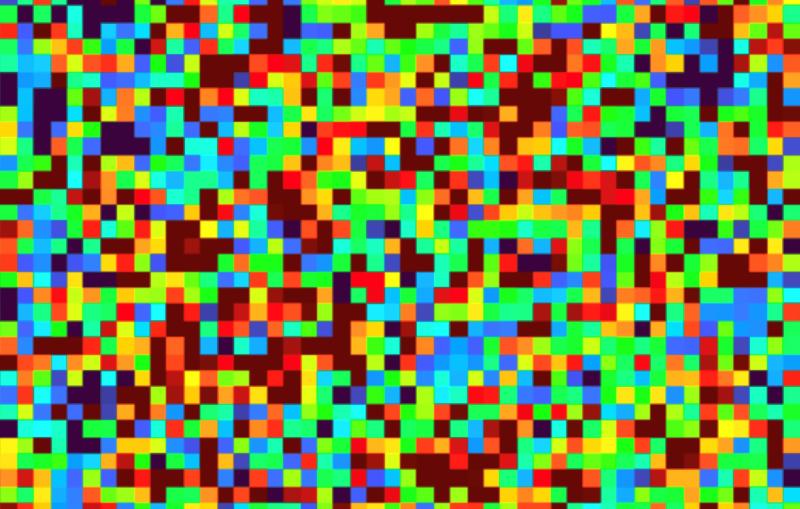Aditya Sood receives 2021 LCLS Young Investigator Award for work at intersection of materials science and ultrafast physics
The early career award honors Sood for his research and leadership using the LCLS user facility at SLAC National Accelerator Laboratory.
By Graycen Wheeler
Aditya Sood, a research scientist with the Stanford Institute for Materials and Energy Sciences at Stanford University and the Department of Energy’s SLAC National Accelerator Laboratory, has received the 2021 LCLS Young Investigator Award for his work combining materials science with ultrafast physics. The award celebrates early-career scientists who perform noteworthy research using SLAC’s Linac Coherent Light Source (LCLS) X-ray free-electron laser.

“I’m over the moon,” Sood says. “I was honored to even be a finalist.” Finalists Yanwen Sun, Siqi Li, Haiwang Yong and Sood gave talks about their research during the 2021 LCLS/SSRL Annual Users’ Meeting, which took place Sept. 20-24.
Exploring electronics
Sood received his bachelor’s degree in materials science and engineering from the Indian Institute of Technology Kanpur in 2011. He completed his doctorate in materials science and engineering in Ken Goodson’s lab at Stanford, where he studied the movement of heat at the nanoscale in electronic devices. As a postdoctoral fellow in the SLAC and Stanford research groups of Aaron Lindenberg and William Chueh, Sood has continued to explore the properties of electronic devices.
Electronic devices use circuits composed of millions of tiny switches to store information and perform computational tasks. In some cases, these switches are made of materials that can act as either insulators or electronic conductors depending on their atomic arrangements. Stimulating these switches with light, electricity or heat causes them to shift their atomic arrangement from insulating to conducting states.
“These devices have been studied for a long time,” Sood says. “But it's not really clear what their fundamental limits are in terms of energy consumption and speed.” Sood and his colleagues wanted to see how the positions of the atoms changed throughout the switching process and what trajectory they followed.
To do that they used SLAC’s “electron camera,” an ultrafast electron diffraction instrument known as MeV-UED, to observe the switches in action – the first time the technique had ever been applied to this problem. “It was one of the most exciting experiments I've been part of,” Sood says.
This feat was rife with technical challenges, but they were no match for Sood. “He dreams up the toughest experiments and gets them to work,” Chueh wrote in a letter recommending Sood for the award. “Aditya’s work, past and present, will undoubtedly stand the test of time.”
The instant between 'off' and 'on'
To image the switches, Sood needed to build devices that were thin enough for electrons to pass through but hardy enough that he could switch them on and off tens of millions of times without breaking them. Once these devices were ready to be imaged, Sood precisely synchronized electron pulses from the MeV-UED instrument with the electrical pulses used to activate the switch. This allowed him to catch the switch in the tiny instant between its “off” and “on” states.
In that instant, Sood and his colleagues observed that a switch can undergo small changes to its electron density that allow it to become conductive a few millionths of a second before its atoms snap into the positions that are associated with its stable “on” state. This raises the possibility of electronic switches that don’t require atomic motion to shift between their “on” and “off” states, which would allow for faster, lower-energy computing.
In the published results, Sood and colleagues wrote that they hope this observation inspires a broad search for other hidden states in electronic switches, which could lead to more advances in computing. “The new opportunity now is to interface ultrafast probes with electronic devices,” Sood says. “The fact that SLAC is located in the heart of Silicon Valley makes it the perfect place to develop and advance these capabilities.”
In their letters recommending Sood for the award, Lindenberg and Alex Reid, a staff scientist at SLAC, praised Sood’s remarkable leadership skills in this field. In his letter, Lindenberg says Sood “is destined to be a superstar in this new and expanding field, impacting the directions of SLAC into the future.”
The admiration is mutual. “I was really lucky to be able to work with excellent collaborators who are not just solid scientists, but also nice people.” Sood says. “When you're doing these multi-day experiments, where you're up in the middle of the night getting data and things aren't working, it always helps if the person next to you is also a friend.”
Sood hopes that his work and the LCLS Young Investigator Award will draw even more excellent collaborators to the interface between electrical engineering and ultrafast physics.
“We are excited to push these experiments to even faster time scales and explore fundamental questions in energy storage and electronic memory,” he says. “Hopefully, this award extends the reach of SLAC’s unique capabilities in ultrafast science towards a much broader audience.”
Contact
For questions or comments, contact the SLAC Office of Communications at communications@slac.stanford.edu.
SLAC is a vibrant multiprogram laboratory that explores how the universe works at the biggest, smallest and fastest scales and invents powerful tools used by scientists around the globe. With research spanning particle physics, astrophysics and cosmology, materials, chemistry, bio- and energy sciences and scientific computing, we help solve real-world problems and advance the interests of the nation.
SLAC is operated by Stanford University for the U.S. Department of Energy’s Office of Science. The Office of Science is the single largest supporter of basic research in the physical sciences in the United States and is working to address some of the most pressing challenges of our time.





